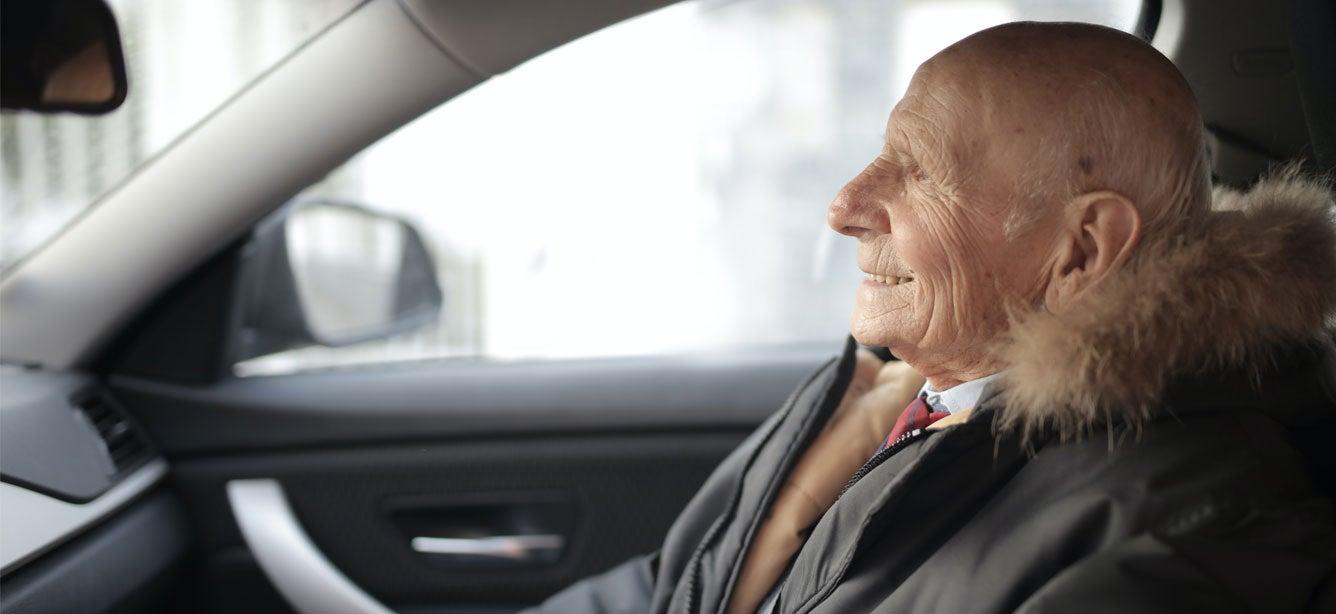Making Your Senior Center More Comfortable for Those with Visual Impairments
4 min read

Vision loss is a growing challenge for older Americans, with approximately 20 percent of those over 60 experiencing visual impairment.
Some common challenges that those with visual impairments attending their community-based senior center might experience, include:
- Bumping into people or things;
- Difficulty or inability to read or see activities clearly;
- Difficulty recognizing people they know, and
- Challenges getting to the facility if they have lost their driver’s license or feel afraid to drive.
Signs your senior center participant may be experiencing vision loss
Although this list is not comprehensive, these are some of the common signs of a decline in vision and a serious eye condition.
- Not recognizing people
- Stumbling or tripping over steps
- Signing name off of the line
- Wearing mismatched or stained clothing
- Frequently spilling liquids or food
- Not being able to see playing cards clearly or having difficulty participating in regular social activities
- If driving, noticeable difficulties with parking
- Not attending on a regular basis because of vision changes or inability to get to the center
Here are some practical tips for making your senior center or community-based organization more accessible and comfortable for individuals experiencing any visual impairment:
- Increase the use of contrast, such as placing black placemats on the light-colored table, Paint door trim, and put contrasting tape on steps.
- Control glare by using appropriate window coverings and adjustable lighting.
- Use high contrast signage and bold fonts and white or light yellow paper for handouts such as activity calendars.
- Provide enlarged and/or tactile versions of print games, playing cards, bingo cards and board games. Such games are available through specialized catalogs.
- Talk directly to a person with vision loss. Do not talk around them to relatives or friends.
- When walking with a person with vision loss, offer your arm for the person to hold onto. Walk about 1/2 step ahead of the person so that you can avoid objects in the pathway. This assistance is called “human or sighted guide.”
- Use descriptive language, especially when giving directions. For example, do not say “over there” but say something like “to your right about 3 feet”.
- Describe the place setting and food arrangement on the plate in terms of a clock face so the person can participate in meal time confidently.
- Make sure to announce changes you may make in furniture arrangement in public areas of the facility.
- De-clutter. Everyone benefits from a clutter free organized space, but none more than a person with vision loss. It is hard to organize a place or things when there is just too much of non-essential things.
- Help get everything organized. Organization is probably the most important thing a person with low vision or blindness can do. Everything should have a specific place and always be put back in that spot. Too often people with visual impairments are assumed to have memory issues or dementia if they all of a sudden can’t find things. As a person who can see you can enter a room and scan it to locate items.
- Use labelling and marking strategies. For example, put a small rubber band around the salt shaker if the pepper shaker feels/looks the same, put a raised dot on the start or one-minute button of the microwave. There is no rule, except don’t over label or over mark.
Here are some great resources to direct program participants with visual impairments to to help them learn some basic adaptive strategies and find support.
- Independent Living Older Individuals who are Blind Technical Assistance Center. (2021). Lessons for Living. www.OIB-TAC.org.
- American Printing House for the Blind. (2021). Getting Started 2020: A Guide for People New to Vision Loss - VisionAware.
If you believe your senior center could benefit from more information, training, or would like to find out how to help your program participants access services visit OIB-TAC.org. Free continuing education, helpful resources, and technical assistance is available.
Help is available, and a person with a visual impairment—even one with total blindness—can learn adaptive techniques to live alone, cook, keep their home clean, use a computer and phone, travel independently, participate in community-based activities, and work.
To find low cost and often free services for those 55 and older visit TimeToBeBold.org to link to a list of resources available in your community from the Department of Education Rehabilitation Services Administration. To learn more about the specialized services and training available for individuals 55 and older with low vision and blindness go to OIB-TAC.org. or TimeToBeBold.org .




